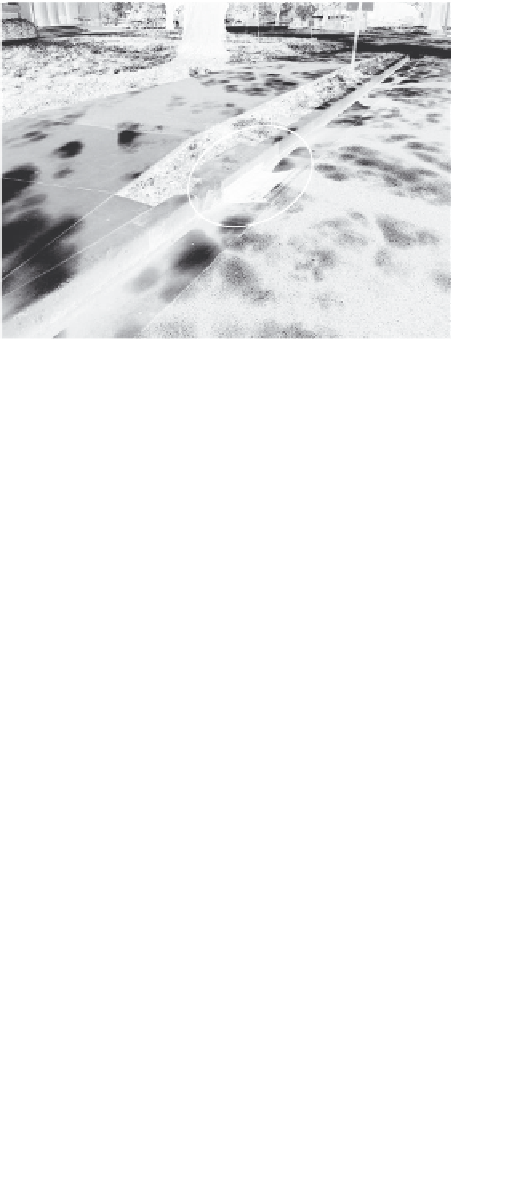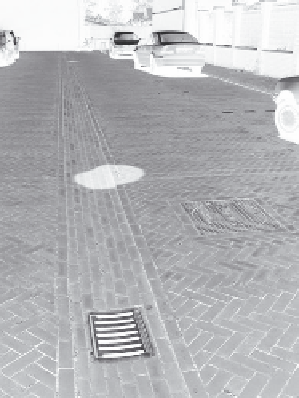Agriculture Reference
In-Depth Information
sloped to carry surface water to a system
of catch basins. Water flows across the sur-
face of a paved area such as those shown
in Figures 14.13-A and 14.13-C, where the
water drops into the basin to be carried in
pipes by gravity to some other area on the
site or to a municipal storm water system.
The catch basin in Figure 14.13-B was posi-
tioned to gather water flowing from several
directions in the parking lot. The parking
lot paving was shaped to direct surface
water toward the curb, then along the curb
to the catch basin.
Figure 14.14
Storm water street inlet
More common, and perhaps the norm 25 or more
years ago, was the ubiquitous use of area catch basins
to collect storm water on a site. The water was then
carried underground in pipes to the municipal storm
water system. Storm water inlets were part of munici-
pal storm water infrastructure and were installed in the
streets to collect runoff from the street or from adja-
cent properties, as seen in Figure 14.14. In rural areas
or in less dense residential neighborhoods, swales are
installed along streets and roads to receive and carry
away surface runoff water, as shown in Figure 14.15.
Notice in Figure 14.15 that curbs and gutters are absent,
so the storm water inlet structure is not necessary. The
use of swales along streets is an alternative to a piping
storm water system, and generally is less costly than an
underground municipal system. Sometimes the swale
is preferred for aesthetic reasons, providing what some
designers and their clients consider a soft, less visually
obtrusive solution.
Other solutions for collecting and disposing of surface water are
shown in the examples in Figures 14.16-A and 14.16-B. The standard
approach for collecting storm water in paved areas such as concrete
Figure 14.15
Essentially a brick-lined
swale to direct surface water to the catch
basin











